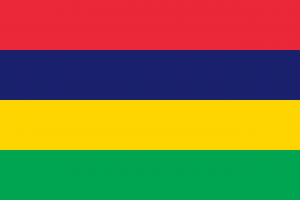Language/Morisyen/Grammar/Gender
Hi Morisyen learners! 😊
In this lesson, we will focus on one of the most important aspects of the Morisyen Grammar: gender. We will learn how to identify the gender of nouns and how they impact the rest of the sentence.
Introduction to Gender in Morisyen[edit | edit source]
In Morisyen, nouns are masculine or feminine. The gender of the nouns is not always related to the sex of the object they describe. For example, a woman can be described using a masculine noun, and vice versa.
It is important to understand the gender of a noun, as it affects the rest of the sentence. Adjectives and pronouns used with the noun will vary according to its gender.
For example, let's take the word "apre midi" which means "afternoon" in Morisyen. In this case, "midi" is masculine, so to say "good afternoon" to a man you would say "bon apre midi" and to a woman "bon apres midi" (with an "e" at the end of "apres").
A little confusing, right? But don't worry, we will go through the rules of gender in Morisyen step by step.
Masculine Nouns[edit | edit source]
Let's begin with the masculine nouns. Generally, masculine nouns are inanimate objects, abstract concepts, days of the week or months of the year. Some common examples of masculine nouns are:
| Morisyen | Pronunciation | English |
|---|---|---|
| zam | zahm | time |
| serviet | seu-vyeh | napkin |
| dimans | dee-mahns | Sunday |
| zanvie | zahn-vyeh | January |
Now, let's see how these nouns impact the rest of the sentence. Here are some examples:
- Person 1: Ena li serviet la ? (Is there a napkin here?)
- Person 2: Wi, ena li serviet la. (Yes, there is a napkin here.)
In this example, "serviet" is masculine, so we use the masculine article "li" to refer to it. Similarly:
- Person 1: Ki lezot zour ki ena dan semenn-la? (What are the other days of the week?)
- Person 2: Lezot zour, se zour-lannwit e zour-samdi. (The other days are Wednesday and Saturday.)
Here, "dimans" (Sunday) is masculine, so we use the masculine article to refer to it.
Feminine Nouns[edit | edit source]
Feminine nouns, on the other hand, usually refer to living beings (both animals and people) or objects that are easily associated with a specific gender. Some common examples of feminine nouns are:
| Morisyen | Pronunciation | English |
|---|---|---|
| fam | fahm | woman |
| karo | kah-roh | car |
| seiz | sayz | season |
| seriz | sey-reez | cherry |
Let's see some examples of how feminine nouns work in Morisyen:
- Person 1: Ki to fer lor la? (What are you doing on the floor?)
- Person 2: Mo pe manze seriz. (I am eating cherries.)
Here, "seriz" is feminine, so we use the feminine article "la" to refer to it. Similarly:
- Person 1: Ki to panse lor sa karo-la? (What do you think of that car?)
- Person 2: Li tro dan. (It's too expensive.)
In this example, "karo" (car) is feminine, so we use the feminine article "sa" to refer to it.
Nouns with Both Gender Forms[edit | edit source]
Some nouns have both masculine and feminine forms, with different meanings. For example:
| Morisyen | Pronunciation | English |
|---|---|---|
| ti-fil | tee-feel | little girl |
| ti-gason | tee-gah-sohn | little boy |
| bondye | bohnd-yeh | God (masculine) |
| bondye-la | bohnd-yeh-lah | God (feminine) |
Here are some examples of how these nouns are used:
- Person 1: Ki to pens lor Bondye? (What do you think of God?)
- Person 2: Bondye-la enn bon-dvizioner. (God is a good visionary.)
In this example, "Bondye" is masculine, while "Bondye-la" is feminine, and they have different meanings.
- Person 1: Ki to panse lor ti-fil la? (What do you think of that little girl?)
- Person 2: Li truv twa sa. (She looks like you.)
Here, "ti-fil" is feminine, and we use the feminine article "la" to refer to her.
Conclusion[edit | edit source]
Gender is an important aspect of the Morisyen language. By understanding the gender of nouns, you can use the correct articles, adjectives, and pronouns, which will make you sound more fluent and natural. Don't hesitate to practice with different nouns and ask native speakers any questions you may have.
Remember to also check out our other Morisyen [1] lessons on Polyglot Club.
➡ If you have any questions, please ask them in the comments section below.
➡ Feel free to edit this wiki page if you think it can be improved. 😎
Sources[edit | edit source]
Finished this lesson? Check out these related lessons: Questions & How to Use Be.

